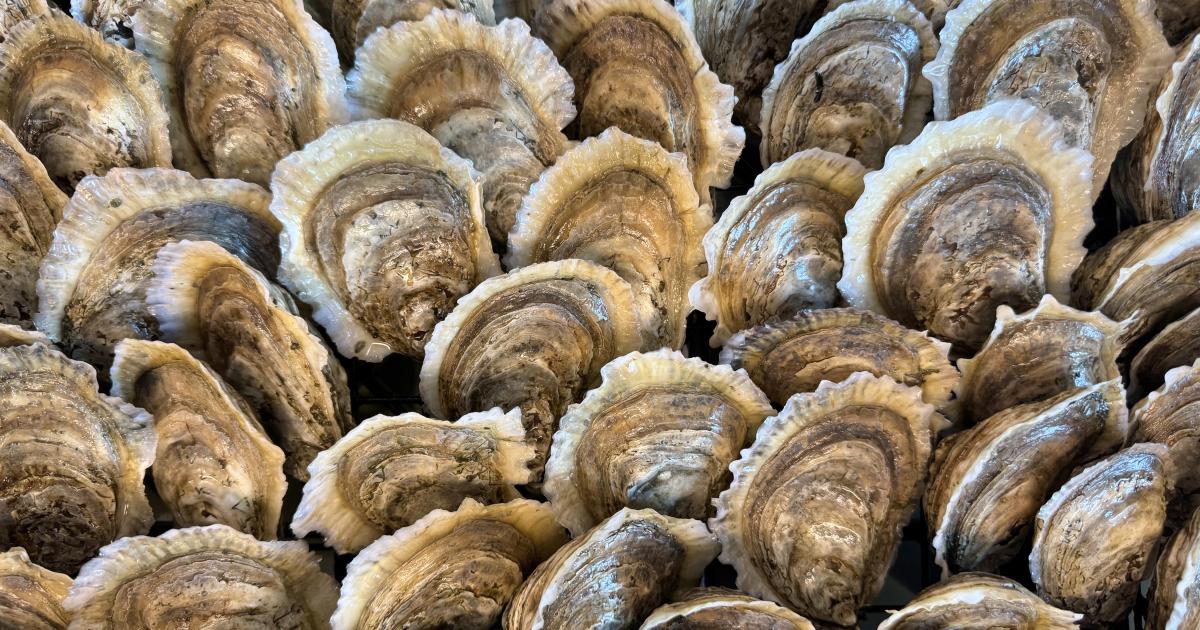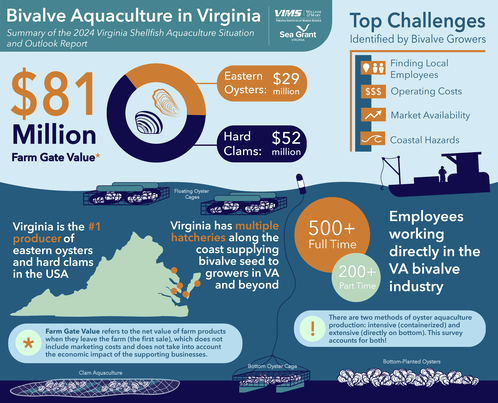Virginia shellfish aquaculture surpasses pre-pandemic levels, report shows

The market for farmed shellfish in Virginia has grown dramatically in the past five years, according to the latest industry report from William & Mary’s Batten School of Coastal & Marine Sciences & VIMS. Survey responses from oyster and clam farmers show collective annual sales rising by tens of millions of dollars and a thriving labor force, with hundreds of jobs created in the commonwealth.
The Virginia Shellfish Aquaculture Situation and Outlook Report, produced by the Marine Advisory Program (MAP), has been providing a yearly snapshot of the industry since 2004. It was paused temporarily in the wake of the COVID-19 pandemic.
The team behind the report, led by Shellfish Aquaculture Specialist Karen Hudson, was relieved to see upward trends after five years without the survey.
“The industry has been resilient,” Hudson said. “It’s still going strong, and that’s a positive.”
Oyster aquaculture drives increase in sales
Direct farm sales for shellfish aquaculture in Virginia in 2024 totaled $81 million, a 52% increase from the $53 million total sales in 2018. Farmed oysters drove most of this growth by more than doubling in sales in this timeframe, with hard clam sales remaining steady as the backbone of the market.
Kim Huskey, VP of Government Affairs for Cherrystone Aqua Farms, applauded the return of the MAP report and said she especially appreciated the infographic Hudson and Marine Business Specialist Shelby White created.
“It reinforces our key points with data and ensures that Virginia’s shellfish industries issues are communicated accurately,” Huskey said. “It also serves as a lasting reference for legislators and their staff, helping them recall details after the meeting and lending weight to our position as they consider policy decisions.”
 These sales numbers make Virginia a national leader in both hard clam and eastern oyster production. The continued expansion of hatcheries, which supply growers in-state and elsewhere with seed, has also given the industry a boost, with sales in hatchery products nearly doubling pre-pandemic numbers.
These sales numbers make Virginia a national leader in both hard clam and eastern oyster production. The continued expansion of hatcheries, which supply growers in-state and elsewhere with seed, has also given the industry a boost, with sales in hatchery products nearly doubling pre-pandemic numbers.
The rise in revenue parallels one in employment, with an estimated 480 jobs directly involved in shellfish aquaculture in 2018 growing to over 700 last year.
Challenges and opportunities for Virginia shellfish farmers
Finding local employees, however, was the top challenge listed by surveyed farmers, an issue common across American aquaculture. Other highly-ranked challenges included operating costs, market availability and coastal hazards.
This ranking of problems faced by shellfish aquaculturists give MAP researchers and extension agents a starting point for where to come up with systemic solutions to help farmers surmount industry-wide challenges.
This industry report is part of the broader work happening at the Batten School & VIMS that make Virginia a national leader in shellfish aquaculture. From pioneering disease-resistant oysters to offering a new graduate subconcentration in shellfish aquaculture, they offer technical guidance, training, and policy expertise to growers and communities statewide.
Now that the report is resuming its normal annual publishing schedule, Hudson hopes to produce the next iteration even faster. Her goal is to release it in time for the next General Assembly session, so that decision makers remain informed about developments and trends within Virginia’s exciting aquaculture industry.
Visit William & Mary’s ScholarWorks to view the full report.

